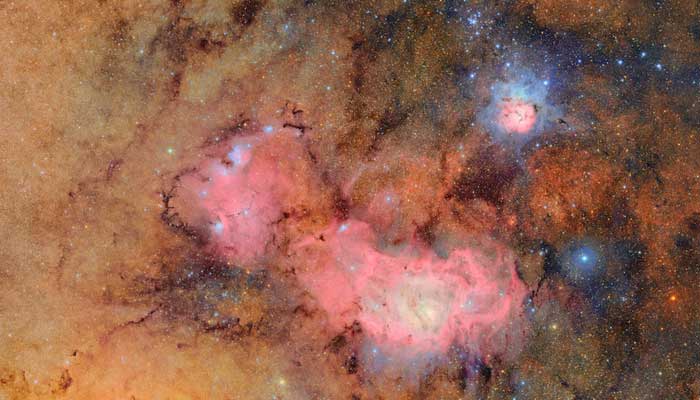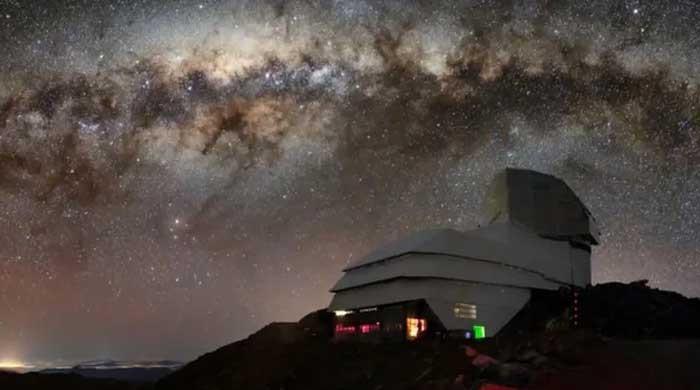Washington: The team behind the long -awaited Observatory of Vera Rubin in Chile published its first images on Monday, revealing impressive views of the stars -forming regions, as well as the distant galaxies.
More than two decades in creation, the giant telescope financed by the United States is perched on the summit of Cerro Pachon in center of Chile, where dark skies and dry air provide ideal conditions to observe the cosmos.
One of the debut images is a compound of 678 exhibitions taken for only seven hours, capturing the nebula and the nebula of the lagoon, both several thousand light years of the earth, shining in vivid roses against the orange red funds.
The image reveals these star nurseries within our Milky Way in unprecedented details, with previously weak or invisible characteristics now clearly visible.
Another image offers a view of the Virgo galaxies cluster.
The team also released a video called “Cosmic Treasure Coftle”, which begins with a foreground of two galaxies before approaching to reveal approximately 10 million more.

“The Rubin Observatory is an investment in our future, which will establish a cornerstone of knowledge today about which our children will proudly build,” said Michael Kratsios, director of the White House and Technology Policy Office.
Equipped with an advanced 8.4 meter telescope and the largest digital camera ever built, the Rubin Observatory is compatible with a powerful data processing system.
At the end of this year, its flagship project, The Legacy Survey of Space and Time (LSST) will begin. During the next decade, the night sky will scan every night, even capturing the most subtle visible changes with unparalleled precision.
The Observatory is named after the American astronomer Pionera Vera C Rubin, whose research provided the first conclusive evidence of the existence of dark matter: a mysterious substance that does not emit light but exerts gravitational influence on the galaxies.

Dark energy refers to the equally mysterious and immensely powerful force that is believed to be promoting the accelerated expansion of the universe. Together, it is believed that dark matter and dark energy constitute 95 percent of the cosmos, but its true nature remains unknown.
The Observatory, a joint initiative of the National Foundation of Sciences of the USA and the Department of Energy, has also been acclaimed as one of the most powerful tools ever built to track asteroids.
In just 10 hours of observations, the Rubin Observatory discovered 2,104 asteroids previously not detected in our solar system, including seven objects close to Earth, all of which do not represent a threat.
As a comparison, all other observatories based on the combined soil and space discover about 20,000 new asteroids per year.
Rubin is also established to be the most effective observatory to detect interstellar objects that pass through the Solar System.
More images of the Observatory are expected to be published later on Monday morning.




